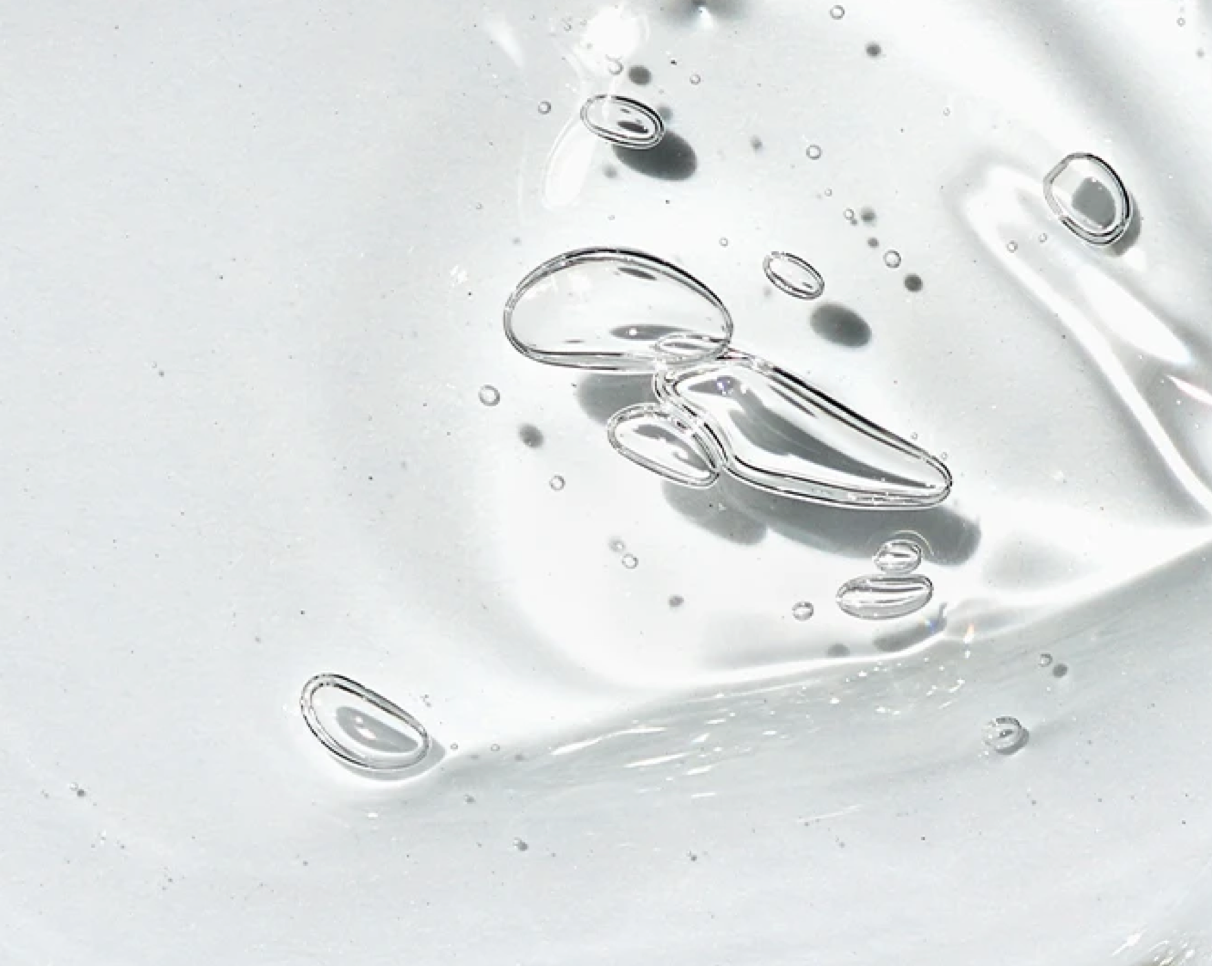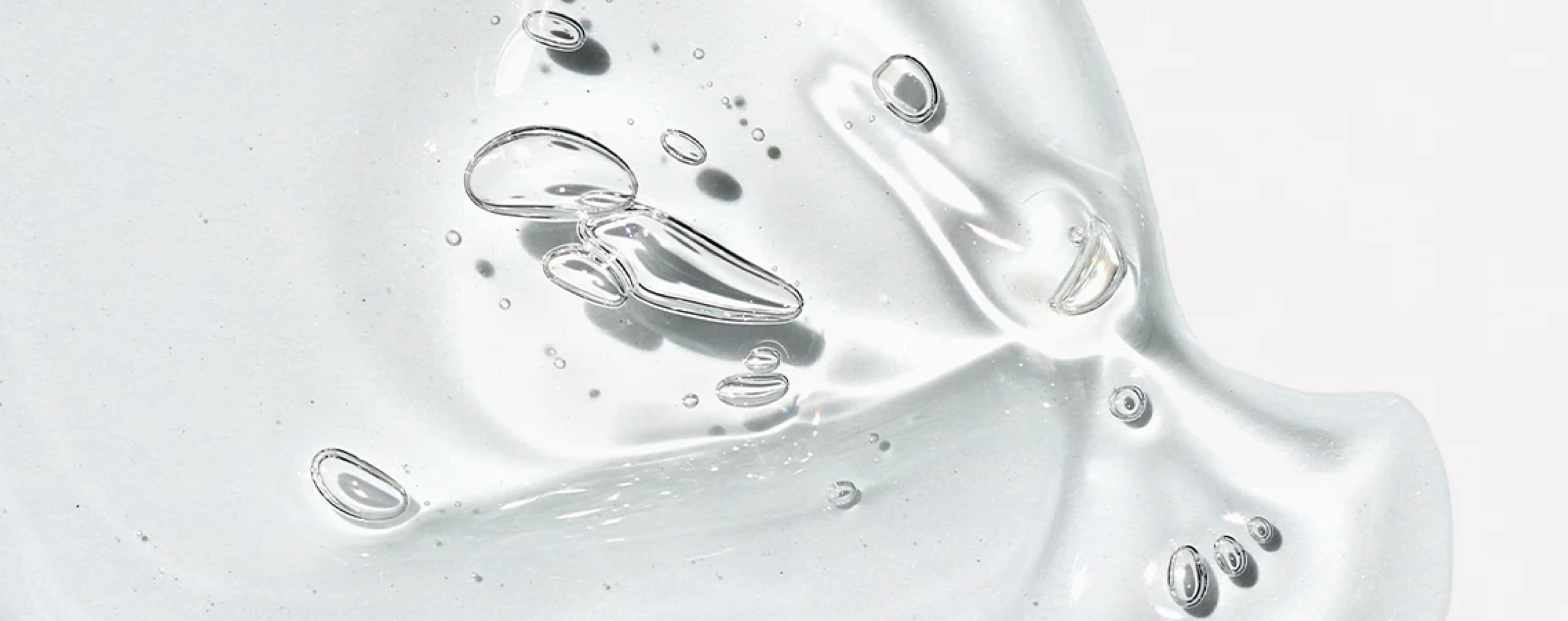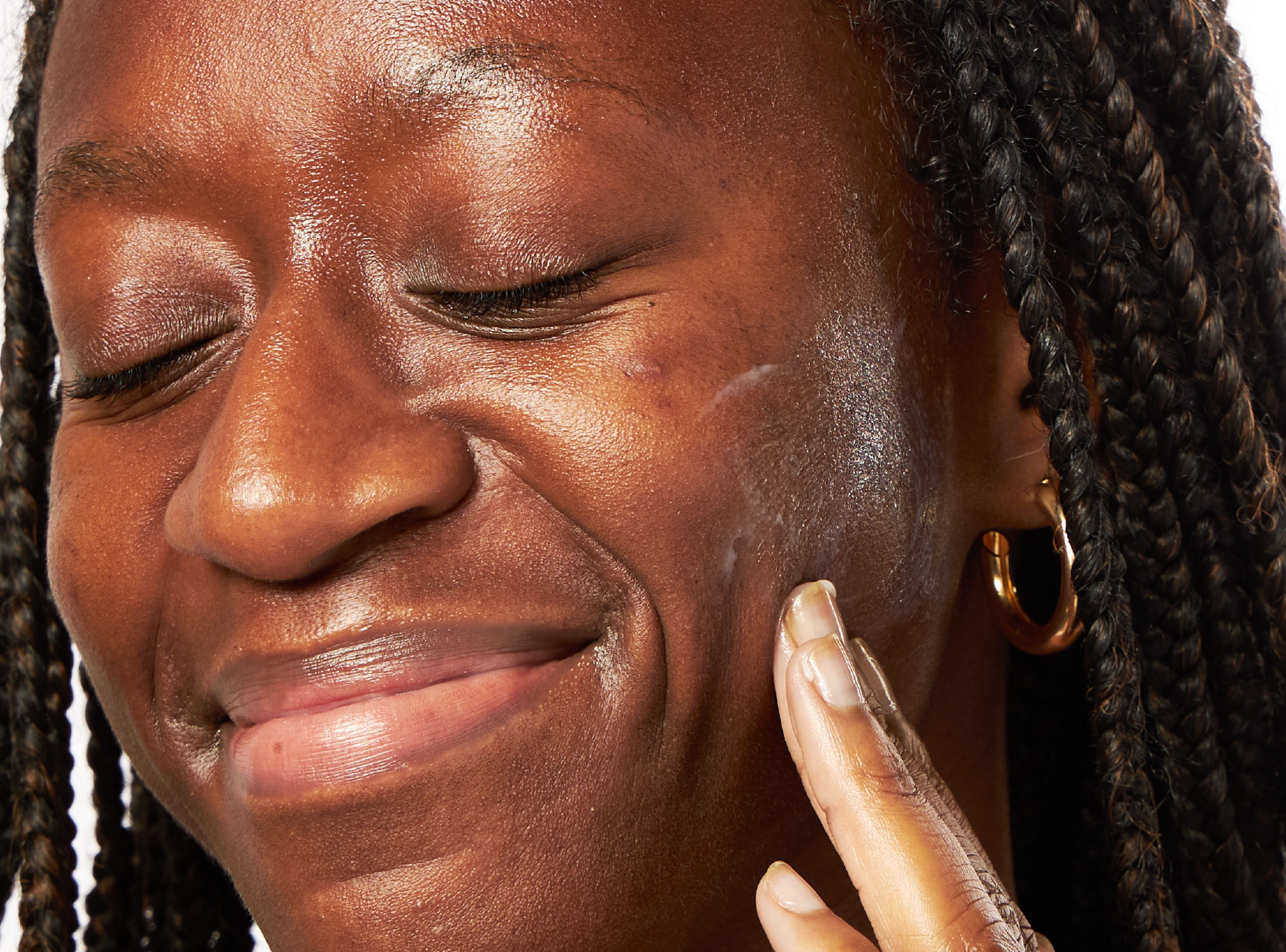Education
Glycerin for skin: is it effective?


SHARE
Education
Glycerin for skin: is it effective?
Medically reviewed by Angela Sheddan, DNP, FNP-BC
Written by Apostrophe Team
Last updated 4/1/2024
If you’ve ever glanced at the ingredient list on any of your skin care bottles, there’s a good chance you’ve spotted glycerin. In fact, in a 2014 study, it was found to be the third most common ingredient in cosmetic products.
Glycerin is used in everything from makeup to facial cleansers and moisturizers, and there is research that suggests it can be beneficial for your complexion — especially if you have dry skin.
Keep reading to uncover more about this common ingredient in skin care products — including what it is and how it may benefit your skin.
A Bit of Background on Glycerin
Glycerin is naturally in things like soybeans and cane, though when used in skincare, it’s generally man-made.
It is sometimes called glycerol and is odorless liquid. When it is used in skincare products, it’s considered a humectant.
Humectants bring water from your dermis to your epidermis, which is the outermost layer of your skin. The dermis is the layer of skin directly under it.
A study done in 2016 found glycerin to be one of the most effective humectants in comparison to other humectants like alpha hydroxy acids, hyaluronic acid, and more.
Translation: Glycerin can be a great help to dehydrated skin and is worth considering for your skin care routine.
Glycerin and Your Skin
There’s a reason glycerin is in so many skin care products; it has some solid benefits for all skin types.
According to one study, glycerin can hydrate, improve skin barrier function, protect against irritants, and accelerate wound healing.
Generally, you won’t find skin products that are 100 percent glycerin. Instead, this ingredient is mixed with other things to create effective products.
One study found that glycerin combined with hyaluronic acid and Centella asiatica (a type of plant) extract can boost skin barrier function for up to 24 hours after application.
Note: When you see glycerin in a product, you may also want to look for the inclusion of occlusives. While humectants help pull hydration in, occlusives create a protective barrier to keep that moisture in.
Squalene and silicone derivatives are two common occlusives. The first can make your skin look softer. The second is a synthetic that sits on skin to keep water in.
As for side effects, there aren’t any that are widely known to be associated with glycerin. Though, it is possible you could notice adverse effects when using products that contain this ingredient.
If you notice any skin irritation or have an allergic reaction, contact a healthcare professional.
Additionally, if you already have a skin condition, it’s a good idea to speak with a healthcare professional before switching or adding any skin care products.
Alternatives to Glycerin
As outlined above, one of glycerin’s main benefits for the skin is that it moisturizes. Hydration can give you radiant skin — and who doesn’t want that?
Moisturizer is a crucial component of any skin care regimen. (Find out what else should be a part of your regimen by reading our guide to building a skincare routine)
While your skin naturally hydrates itself by secreting oil, it can often use some help. That’s because natural oil can be worn away by environmental factors (like the sun). Heck, even oily skin and acne-prone skin need moisturizer.
Besides glycerin, hyaluronic acid is a common moisturizing ingredient. It’s actually naturally found in the body — mainly in your eyes, skin, and joints.
A study done in 2011 found that when women between the ages of 30 and 60 used a topical hyaluronic acid cream, they found significant improvements in skin hydration.
Other key ingredients that can boost moisture in your skin include:
Alpha Hydroxy Acid
Lactic Acid
Jojoba Oil
Benefits of Glycerin for Skin
If you’ve ever wondered if glycerin is bad for your skin, rest assured that it is not. In fact, the opposite may be true. Glycerin can be good for your skin — especially when it comes to hydrating it.
Glycerin is a humectant, which means that it attracts water. That makes it good for dry skin.
It’s a good idea to make sure that products you use that have glycerin also contain an occlusive (like squalene) to help keep that moisture locked in.
In addition to glycerin, there are plenty of other moisturizing ingredients — like hyaluronic acid, lactic acid, and others — that can help your skin go from dull to dewy.
If you’re interested in a professional opinion about whether glycerin could help you achieve healthy skin, set up a consultation with a healthcare professional.
Sources
Safety Assessment of Glycerin as Used in Cosmetics, 2014. Retrieved from https://www.cir-safety.org/sites/default/files/glycerin.pdf
Glycerin. Cosmetics Info. Retrieved from https://cosmeticsinfo.org/ingredient/glycerin-0
Glycerol. National Library of Medicine. Retrieved from https://pubchem.ncbi.nlm.nih.gov/compound/Glycerol#section=Use-Classification
Chularojanamontri, L., Tuchinda, P., Kulthanan, K., Pongparit, K., (2014, May). Moisturizers for Acne. The Journal of Clinical and Aesthetic Dermatology, 7(5): 36-44. Retrieved from https://www.ncbi.nlm.nih.gov/pmc/articles/PMC4025519/
What Kids Should Know About the Layers of Skin. American Academy of Dermatology. Retrieved from https://www.aad.org/public/parents-kids/healthy-habits/parents/kids/skin-layers
Sethi, A., Kaur, T., Malhotra, SK., Gambhir, ML., (2016). Moisturizers: The Slippery Road. Indian Journal of Dermatology. Retrieved from https://www.ncbi.nlm.nih.gov/pmc/articles/PMC4885180/
Fluhr, J., Darlenski, R., Surber, C., (2008). Glycerol and the skin: holistic approach to its origin and functions. Br J Dermatol. Retrieved from https://pubmed.ncbi.nlm.nih.gov/18510666/
Milani, M., Sparavigna, A., (2017). The 24-hour skin hydration and barrier function effects of a hyaluronic 1%, glycerin 5%, and Centella asiatica stem cells extract moisturizing fluid: an intra-subject, randomized, assessor-blinded study. Clinical, Cosmetic, and Investigational Dermatology. Retrieved from https://www.ncbi.nlm.nih.gov/pmc/articles/PMC5560567/
Chularojanamontri, L., Tuchinda, P., Kulthanan, K., Pongparit, K., (2014, May). Moisturizers for Acne. The Journal of Clinical and Aesthetic Dermatology, 7(5): 36-44. Retrieved from https://www.ncbi.nlm.nih.gov/pmc/articles/PMC4025519/
Squalene. Cosmetics Info. Retrieved from https://cosmeticsinfo.org/ingredient/squalene
Cetyl Dimethicone. Cosmetics Info. Retrieved from https://cosmeticsinfo.org/ingredient/cetyl-dimethicone
Picardo, M., Ottaviani, M, et al. (2009, Mar-April). Sebaceous gland lipids. Dermato Endocrinology, 1(2): 68–71. https://www.ncbi.nlm.nih.gov/pmc/articles/PMC2835893/
Liu, K., Nassim, J., (2020). The Hype on Hyaluronic Acid. Harvard Medical School. Retrieved from https://www.health.harvard.edu/blog/the-hype-on-hyaluronic-acid-2020012318653
Pavicic, T., Gauglitz, G., Lersch, P., et al., (2011). Efficacy of cream-based novel formulations of hyaluronic acid of different molecular weights in anti-wrinkle treatment. J Drugs Dermatol. Retrieved from https://pubmed.ncbi.nlm.nih.gov/22052267/
Like what you just read? Sign up for our email list to get the scoop on skincare science delivered straight to your inbox.

Deep Dives
A dermatologist shares his thoughts on the recent studies about benzoyl peroxide and benzene.
Read More
Education
What is milia?
What is milia? Today, we’re jumping into one type of bump that you may have heard about most commonly in infants — milia.
Read More
Education
Best moisturizer for acne-prone skin
If you have combination acne-prone skin, figuring out which moisturizer is best for your skin might be tough. In this guide, we break down the best moisturizer for combination, acne-prone skin.
Read More
